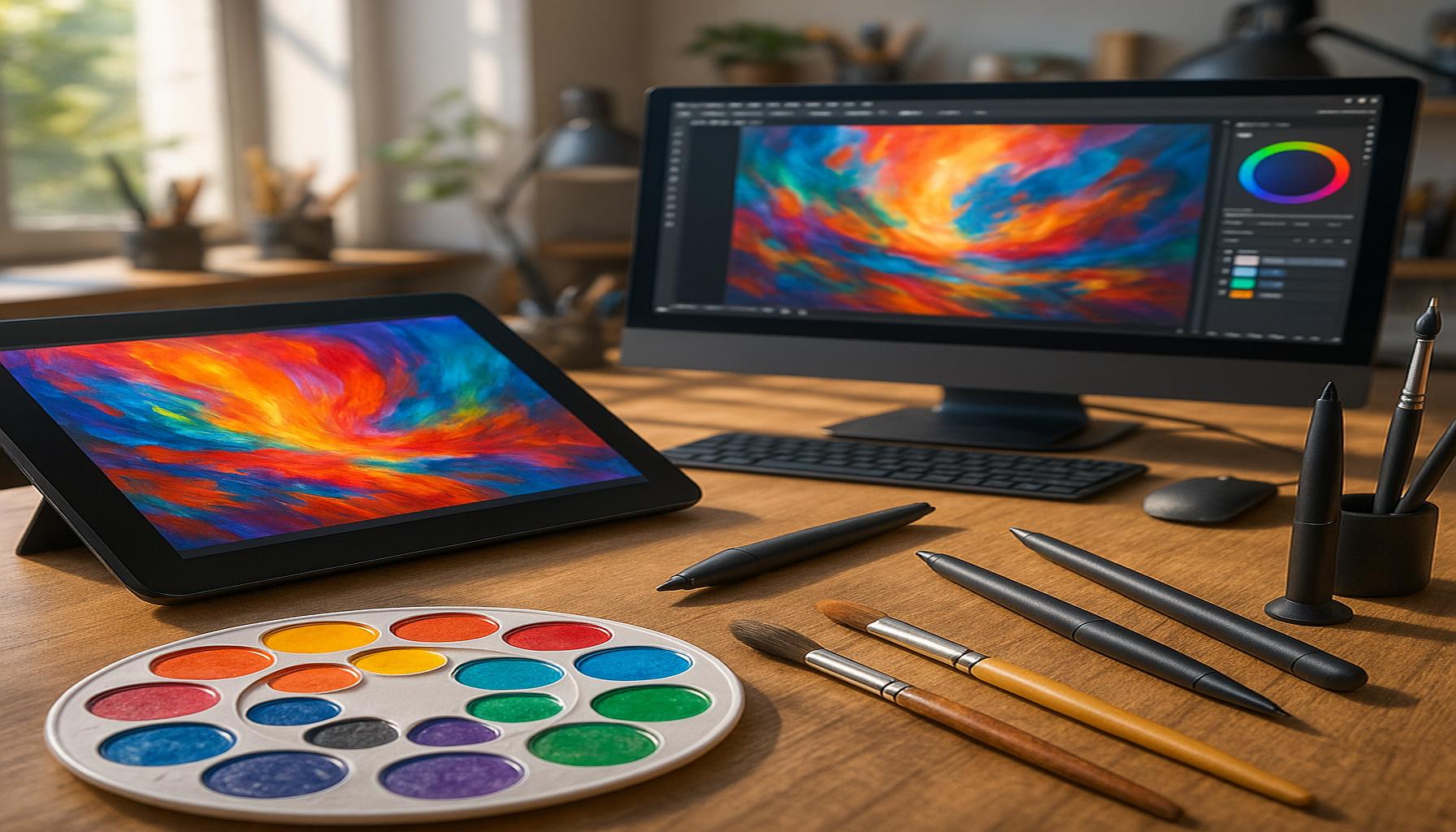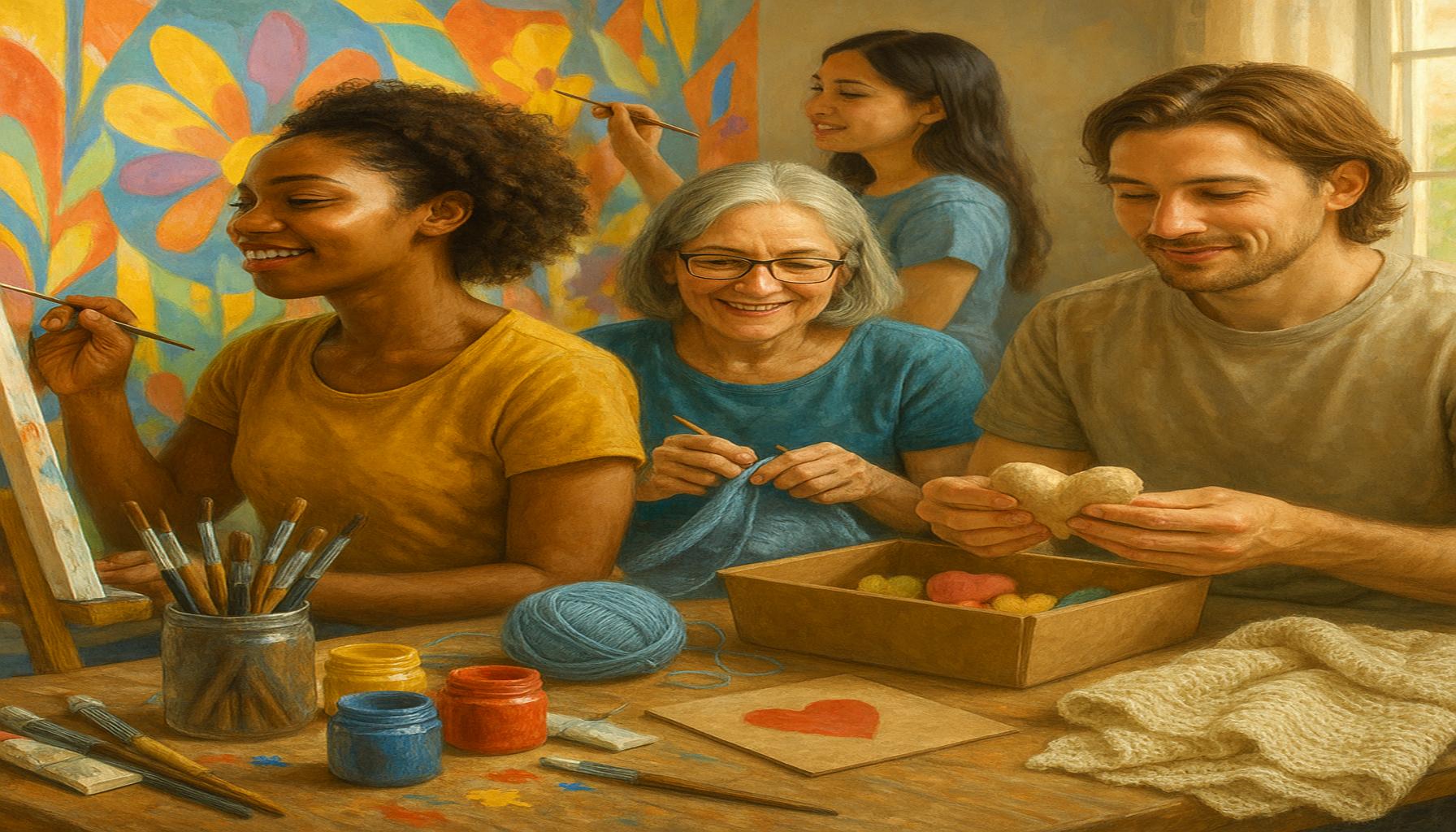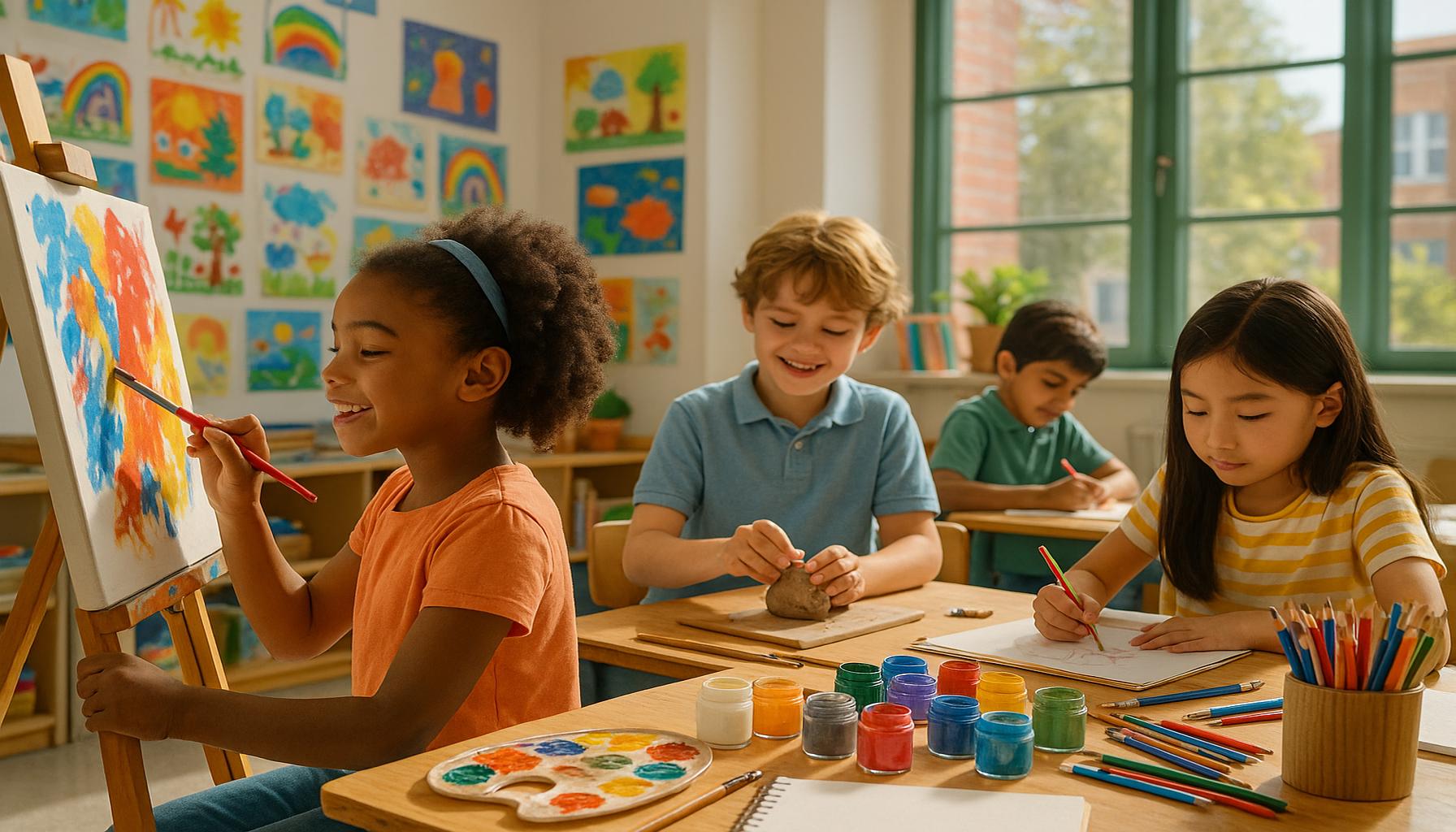The Interaction between Art and Social Media: How Digital Platforms are Changing the Way to Share Artistic Hobbies
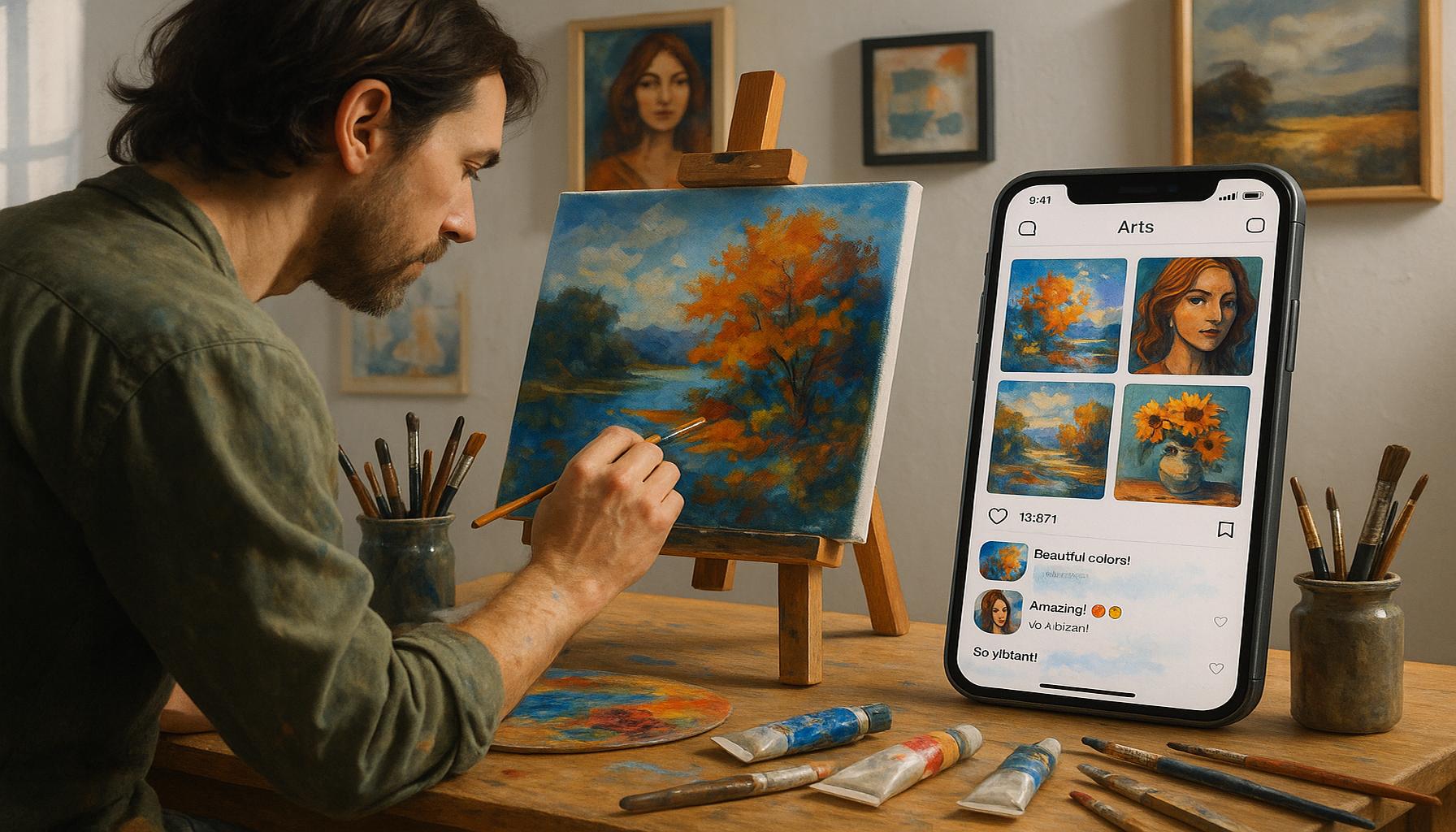
The Shift Toward Digital Artistry
The landscape of artistic expression has dramatically evolved over the last decade, primarily due to the intersection of art and technology. Social media platforms such as Instagram, Pinterest, and TikTok have emerged not only as communication tools but also as dynamic galleries that offer artists a new stage. This transformation provides creators—whether established or aspiring—with a means to showcase their work to global audiences, breaking down geographical barriers that once restricted access to the art world.
In this new environment, the traditional concept of galleries as the primary venue for display has been significantly redefined. Artists can now exhibit their creations through a simple post, granting them visibility without the need for costly exhibition spaces. The impact of this shift is profound; it allows for a greater diversity of voices and styles, enabling underrepresented artists, such as those from minority communities, to gain recognition and appreciation.
Key Features of This Interactive Experience
- Accessibility: The digital realm opens doors for artists to reach global audiences without the need for physical galleries, democratizing the art space.
- Community Engagement: Digital platforms foster interaction between creators and their supporters, allowing for exciting collaborative projects, live-streamed discussions, and rapid feedback loops. For instance, artists can host Q&A sessions, asking followers what they would like to see next in their work.
- Diverse Formats: From traditional painting and sculpture to digital illustrations and performance art, social media accommodates a wide array of artistic expressions, providing an inclusive space for all forms of creativity.
However, this digital renaissance also presents challenges and opportunities that artists must navigate. They are often required to adjust to the constant flux of algorithms—one day a piece may go viral, while another may receive minimal attention. This dependency can create pressure to cater content to audience preferences, potentially compromising artistic integrity. Moreover, the sheer volume of artwork shared daily can make it difficult for individual artists to stand out in a saturated market.
Despite these challenges, the ways in which social media shapes artistic hobbies and the impact on the artistic community are undeniable. These platforms have nurtured a spirit of experimentation, encouraging artists to innovate and connect with audiences in real-time. This phenomenon has led to an increase in creative collaborations; for instance, a digital painter might partner with a musician to create visually stunning music videos or live performances.
Exploring the Effects
As we delve deeper into the intersection of art and social media, it becomes clear that digital platforms are redefining the artistic experience not only in the United States but across the globe. They have inspired a new generation of artists to embrace technology and engage directly with their audiences, paving the way for innovative forms of expression that will shape the future of art.
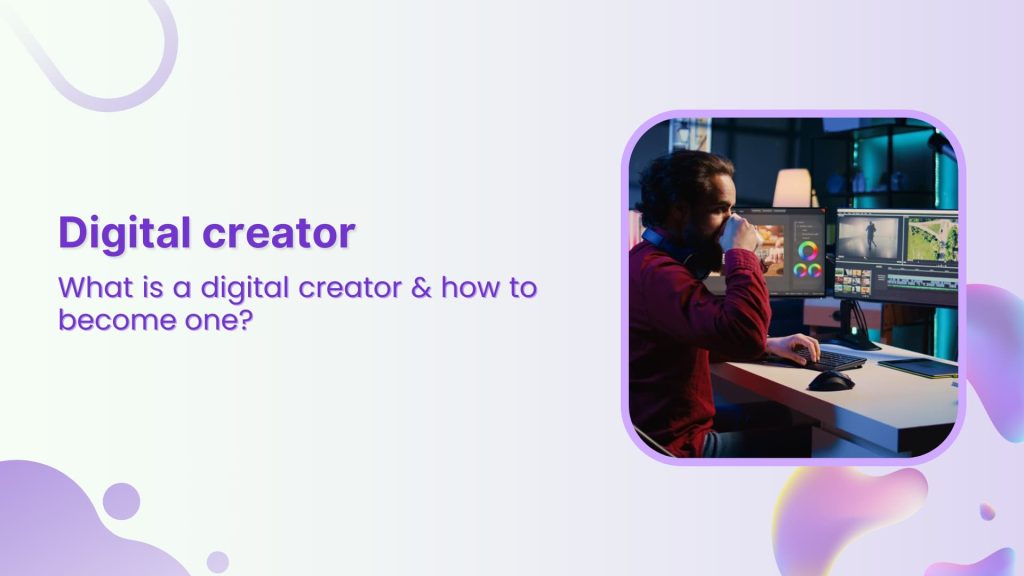
The melding of technology and creativity invites art lovers not only to observe but to participate actively in the artistic dialogue. With each post, share, and comment, the boundaries of what art can be continue to expand, creating a vibrant, ever-evolving landscape of artistic expression. The journey of art in this digital era offers exciting possibilities and challenges that can redefine how future generations perceive and engage with creativity.
DIVE DEEPER: Click here to learn more about the impact of art on mental health</
The New Era of Artistic Engagement
As we navigate through the intricacies of the modern art scene, it becomes apparent that social media is not merely an accessory but a pivotal component in influencing how artistic hobbies are shared and celebrated. Platforms such as Instagram, TikTok, and Facebook have transformed the art community into an interconnected web of creators and admirers, cultivating a culture of immediacy and openness. This new era encourages artists to think outside the traditional frameworks and to utilize digital tools to craft and market their work effectively.
The significance of this interactive landscape cannot be overstated. Consider that studies have shown that over 70% of artists attribute their visibility and sales to social media platforms, highlighting the critical role these channels play in modern art marketing. Artist and collector engagement through likes, shares, and comments has allowed for a much deeper interaction than traditional galleries could offer, creating a communal space where feedback is practically instantaneous.
Revolutionizing Artistic Practices
Digital platforms have sparked a revolution in artistic practices, shallowing the barriers between the artist and the audience. What were once private studio creations can now become public dialogues. This shift has inspired many artists to rethink not only how they showcase their work but also the kind of work they produce. In response to the dynamic nature of social media, artists are increasingly utilizing multimedia formats, encompassing everything from digital art to video performance pieces, allowing them to engage audiences in compelling new ways.
- Real-Time Feedback: Artists can now receive immediate feedback on their creations, allowing them to adjust their styles and techniques dynamically based on audience preferences.
- Collaborative Opportunities: Social media encourages collaboration between artists across various disciplines. For instance, a painter can collaborate with a photographer to create woven narratives that are visually innovative.
- Educational Content: Many artists share tutorials or behind-the-scenes insights into their creative processes, fostering a learning culture and empowering others to explore artistic hobbies themselves.
The accessibility of these platforms has not only democratized the art world but has also unveiled a treasure trove of artistic talents that might have otherwise remained inconspicuous. Emerging artists, particularly those from diverse backgrounds or economically disadvantaged communities, are finding spaces and communities on social media that celebrate their unique perspectives. This influx of fresh talent injects vitality and innovation into the art ecosystem, creating a vibrant tapestry of ideas and styles.
Furthermore, social media’s visual nature plays a crucial role in how art is perceived and evaluated. As platforms emphasize striking visuals and engaging narratives, artists are tasked with presenting not only their final pieces but also their artistic journeys. The allure of sharing struggles, triumphs, and everyday processes humanizes the creators, allowing audiences to form connections that transcend beyond mere appreciation of the end product.
In summary, the intersection of art and social media represents a paradigm shift that continuously reshapes artistic expression and engagement. As we explore this ongoing evolution, it becomes evident that both artists and audiences stand to gain immensely from the transformative potential of digital platforms. This dynamic relationship encourages creativity, collaboration, and a broader understanding of what art can encompass in an increasingly interconnected world.
| Category | Key Features |
|---|---|
| Viral Exposure | Platforms like Instagram and TikTok enable artists to reach a global audience quickly. |
| Community Engagement | Social media fosters connections, allowing artists to collaborate and share feedback. |
| Diverse Content Creation | Artists can create varied content including time-lapse videos, tutorials, and behind-the-scenes insights. |
| Monetization Opportunities | Digital platforms provide avenues for artists to sell their work directly to consumers via social commerce. |
| Personal Branding | Artists build a recognizable identity that helps in cultivating a loyal following. |
The profound interaction between art and social media is reshaping how individuals with artistic hobbies share their creations and connect with diverse audiences worldwide. Digital platforms, primarily Instagram, TikTok, and Pinterest, serve as vibrant stages where talent meets technology. Artists harness the power of viral exposure, capitalizing on trends to showcase their work to millions while establishing a unique personal brand that resonates with viewers, enhancing their visibility. Moreover, community engagement has never been more accessible. These platforms enable collaboration among artists, fostering a sense of belonging and support. They also allow for the sharing of critiques and inspirational exchanges, broadening artists’ perspectives and skill sets.The diverse content creation options available, such as time-lapse videos and tutorials, invite audiences to glimpse the creative process behind each piece. This transparency not only enhances audience engagement but also breeds interest, prompting viewers to explore the artistic journey. Additionally, social media presents numerous monetization opportunities—artists can sell prints directly or use platforms to link to their online stores, making art more accessible in the process.Thus, through leveraging social media, artists are navigating a digital landscape that not only showcases their creativity but also supports their growth and financial sustainability in unprecedented ways.
DIVE DEEPER: Click here to discover traditional recipes from around the world
Amplifying Visibility and Community Building
The reach of social media in the art world extends beyond mere visibility; it creates opportunities for community building that foster support among artists and fans alike. Platforms allow artists to gather not just followers, but active, engaged communities that contribute ideas, critiques, and encouragement. These virtual collectives enable artists to pool resources, share best practices, and collaborate on projects that may have remained elusive in more established art scenes.
Moreover, the advent of hashtags and other organized categories on these platforms enhances discoverability for artists. A search for #artinspiration or #emergingartist can unveil a wealth of creativity that might not be available in conventional galleries. This characteristic of social media boosts the chances for new artists to gain recognition by joining broader conversations and trends within the artistic community.
Take, for instance, the success stories of artists who have leveraged platforms like Instagram to launch their careers. Many have gained substantial followings and subsequently received commissions, gallery shows, or partnerships with brands solely through their social media presence. This phenomenon illustrates how an artist’s reach can be significantly amplified through targeted engagement, marking a paradigm shift in how art is marketed in the digital age.
Curating New Narratives
In addition to community building, social media allows for the curation of new narratives that reflect not only individual artistic journeys but also cultural and social movements. Artists often become visual storytellers, using their platforms to address pressing global issues. By creating art that resonates with collective experiences, artists can leverage hashtags and social media challenges to draw attention to topics like climate change, social justice, and mental health, thereby mobilizing their audience.
- Activism and Art: Many artists have seamlessly integrated activism into their work, using platforms to highlight societal issues. For example, during the Black Lives Matter protests, artists globally shared pieces that captured the urgency of the moment, creating a powerful visual narrative that transcended geographical boundaries.
- Diverse Perspectives: Social media has opened a gateway for diverse cultures and perspectives to take center stage. Artists from historically marginalized backgrounds now have the ability to showcase their work internationally, enriching the global art discourse with their unique narratives.
- Artistic Challenges and Trends: The viral nature of social media often spawns creative challenges that unite artists globally. Examples like #Inktober or #Sktchy challenge artists to create and share work within a defined theme or timeframe, fostering experimentation and pushing creative boundaries.
In an age where interactivity defines engagement, the role of the audience has transformed dramatically. Followers are no longer passive viewers; they become part of the collaborative process. Many artists invite their audience to partake in discussions about upcoming projects or designs, generating excitement and investment in their artistic endeavors. This democratization of the creation process is reshaping the artist-audience relationship, enabling a more profound sense of connection.
The implications of this transformation extend beyond individual artists. Art institutions, galleries, and museums are also adapting to the social media landscape. Many organizations are now creating virtual exhibitions and events specifically for social media audiences, reaching demographics that may have been previously excluded from physical events. As a result, art is becoming increasingly accessible, bridging gaps between cultural institutions and local communities.
Through social media, the once hierarchical structures of the art world are evolving into more democratic and inclusive environments. This evolution not only inspires creativity but enriches collective experiences and shared narratives, offering a glimpse into the future of art as a communal exploration that resonates with diverse audiences across the globe.
DIVE DEEPER: Click here to discover the art of storytelling
Conclusion
The intersection of art and social media is not merely a trend; it signifies a profound transformation in how artistic expression and community engagement coalesce in our digital age. Through enhanced visibility and the nurturing of active communities, platforms such as Instagram and Twitter are enabling artists to share their work far beyond the confines of traditional galleries. By leveraging tools like hashtags and trends, emerging talent can navigate and participate in a vast artistic landscape that was previously inaccessible.
The facilitation of diverse narratives is another critical aspect of this shift. Artists are not just creators; they are storytellers whose works can galvanize movements, challenge societal norms, and spark dialogue around pressing global issues. This fusion of art and activism harnesses the power of collective experiences, amplifying messages that resonate across geographical and cultural boundaries.
Moreover, social media’s inherently interactive nature empowers audiences to become integral players in the artistic process. This democratization of creativity fosters a collaborative environment where followers contribute to the artistic journey, blurring the lines between creator and consumer. As art institutions adapt by offering virtual exhibitions and engaging online experiences, the accessibility of art is increasingly prioritized, inviting a broader demographic into the conversation.
Ultimately, as digital platforms reshape the landscape of artistic expression, this evolution heralds a new era in which art becomes a communal exploration, rich with diverse perspectives and innovative narratives. The journey is far from over and offers an exciting glimpse into the future of art, encouraging audiences and creators alike to stay connected and engaged in this dynamic dialog of creativity.
